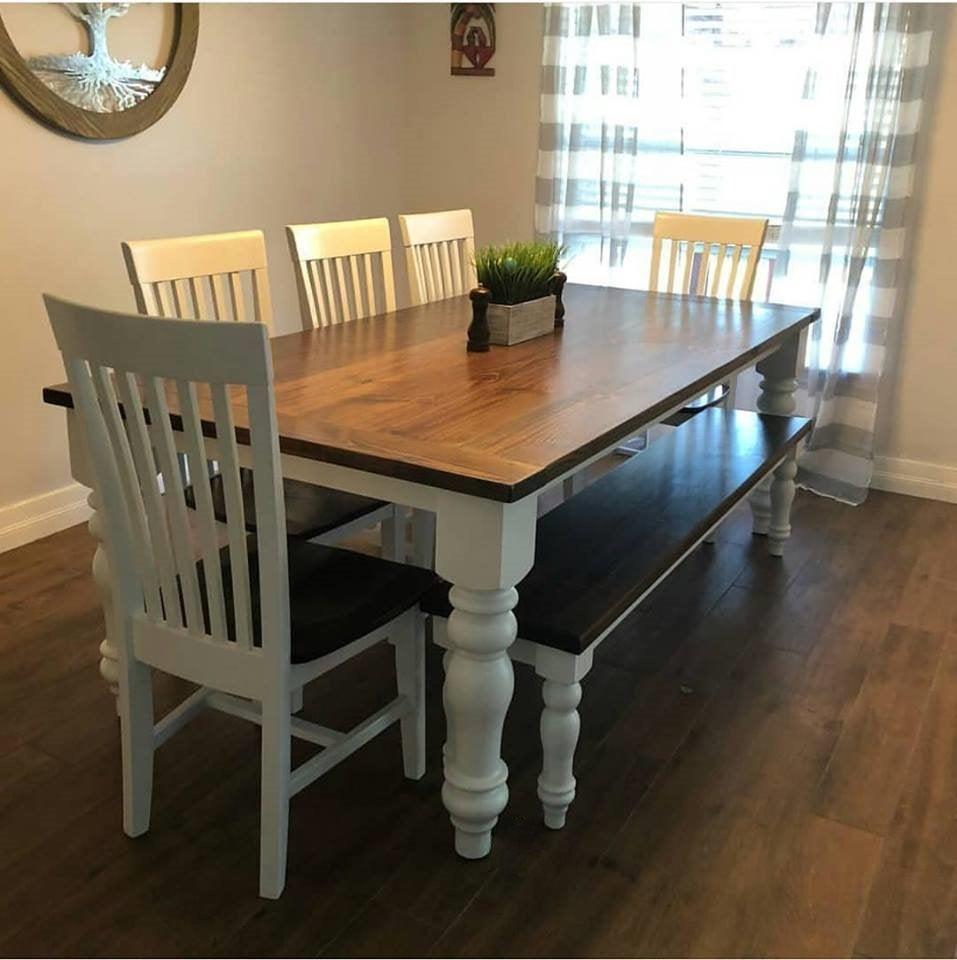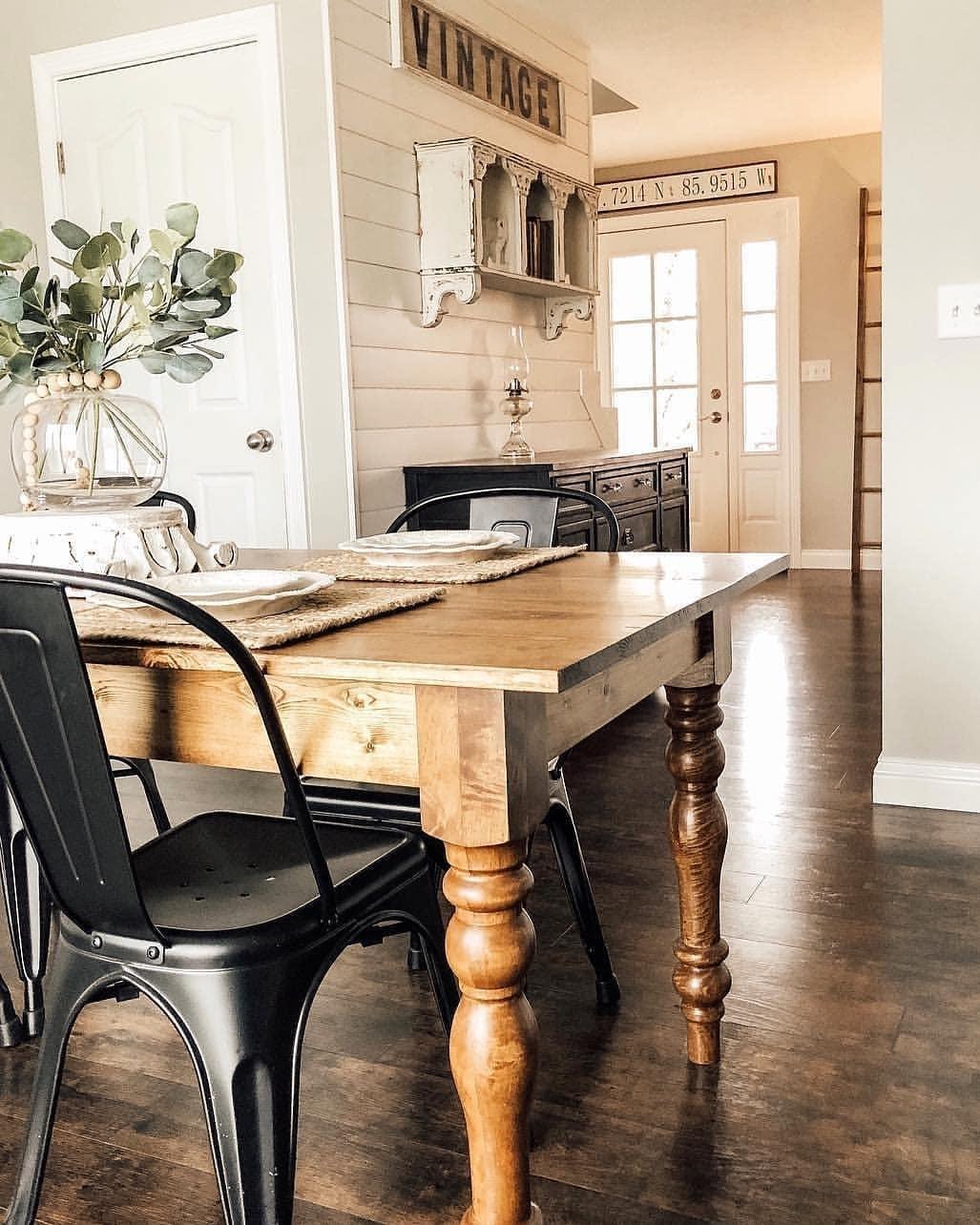Discovering Different Styles for Dining Room Table Legs to Suit Your Aesthetic
Discovering Different Styles for Dining Room Table Legs to Suit Your Aesthetic
Blog Article
Choosing the Perfect Dining Table: What Styles Work Best for Your Home?
Selecting the optimal eating table for your home can be a nuanced process that balances looks and functionality. Whether your space leans in the direction of conventional elegance, contemporary minimalism, rustic charm, or industrial elegant, the variety of styles available can accommodate varied preferences. Each style supplies unique benefits and difficulties that can either enhance or interrupt your dining area's consistency. Recognizing just how different products, shapes, and sizes engage with your existing decor is critical. To navigate these selections efficiently and discover a table that truly matches your home, take into consideration the adhering to elements carefully.
Assessing Your Space
Evaluating the dimensions and design of your eating area is an important initial step in choosing the ideal eating table. Begin by determining the length and width of the area, making up doorways, home windows, and other architectural attributes that can affect table placement. This makes sure that your table not only fits however additionally permits for comfy activity around it.
Think about the variety of individuals you generally captivate. A table ought to fit your household's everyday needs while offering adequate flexibility for occasional visitors. As a rule of thumb, assign at least 24 inches of table width per person to make certain a comfy dining experience.
It's also important to maintain appropriate clearance around the table. Preferably, there should go to the very least 36 inches between the table side and walls or other furniture, making it possible for easy gain access to and movement. For rooms where chairs with arms or extra storage systems like buffets are included, boosting this clearance to 48 inches is suggested.
Lighting and atmosphere play substantial functions as well. Make certain that your eating table straightens with existing lights fixtures or plan for sufficient illumination options. This extensive spatial assessment warranties that your table not only fits literally yet additionally balances with your room's overall functionality and aesthetic.
Popular Table Styles

Conventional eating tables typically feature ornate details, rounded legs, and abundant timber finishes, stimulating a sense of classic elegance. They are ideal for homes with classic decor or those aiming to add a touch of refinement to their eating location.
Modern eating tables focus on simpleness and tidy lines, often incorporating products like glass and metal. These tables are optimal for contemporary rooms, supplying a streamlined and minimalist appearance that complements minimalist style ideologies.
Rustic table, on the other hand, emphasize all-natural products and a handcrafted appearance - dining room table legs. They frequently include reclaimed wood and a troubled surface, producing a warm and inviting atmosphere. These tables function well in farmhouse-style homes or those looking for a relaxing, natural feel
Industrial dining tables incorporate raw materials such as steel and timber, frequently showcasing a practical visual. This design is fit for lofts or city spaces, including a touch of sturdy charm and toughness to the eating experience.
Each style provides distinct advantages, making it necessary to pick one that straightens with your home's total layout and your individual choices.
Product Options
When picking a dining table, the option of material plays an important function in figuring out both the table's looks and functionality. Timber, steel, glass, and composite materials each deal special advantages and challenges, making it crucial to line up the material with your home's style and way of life needs.
Timber is a timeless and flexible choice, available in ranges such as oak, walnut, and mahogany. Known for its durability and heat, wood enhances both standard and contemporary interiors. It calls for routine maintenance to protect against scrapes and warping.
Steel tables, commonly crafted from stainless steel, light weight aluminum, or functioned iron, are applauded for their contemporary charm and toughness. They are particularly fit for industrial or minimal setups but can be vulnerable to damages and may really feel cold to the touch.
Glass dining tables bring an air of elegance and visibility, ideal for smaller spaces as they see this website produce an illusion of even more space. While easy to tidy, glass can be susceptible to smudges and requires careful managing to stay clear of chips and fractures.
Composite products, such as MDF and plywood, offer cost-effective and customizable remedies, though they might do not have the durability of natural materials. Selecting the right material ensures your table is both a useful asset and a visual pleasure.
Sizes And Shape Considerations
After determining the appropriate product for your eating table, the following consideration is selecting the best shape and dimension to suit your area. On the other hand, round tables foster a feeling the original source of affection and are outstanding for smaller eating areas, urging conversation by removing corners and making everybody really feel just as included.
As a guideline of thumb, allocate at least 24 inches of table size per person to guarantee comfortable eating. Furthermore, consider the table's clearance room: there should be at least 36 inches between the table edge and the wall surfaces or various other furniture. Expanding tables offer flexibility if you frequently hold larger celebrations, giving extra seats when required without inhabiting extra area daily.
Matching Your Decoration
Picking a table that harmonizes with your existing decoration is essential in creating a cohesive and welcoming this link space. Begin by evaluating your current interior layout style, whether it be modern, conventional, rustic, or eclectic. The table should enhance the overall visual, not take on it. A streamlined, minimalist table with tidy lines is perfect for a modern-day home, while a vintage, luxuriant table suits a much more conventional setting.
Color and material are equally substantial. If your decoration includes warm tones and natural materials, consider a wood table to enhance the natural feeling. Conversely, a glass or metal table may be a lot more suitable in an area controlled by awesome shades and commercial components. Take note of the finish, as it needs to mirror other furnishings and fixtures to keep consistency.
A rough-hewn, redeemed timber table can add personality to a rustic room, while a refined marble surface can elevate a glamorous dining location. A well-matched dining table not only boosts aesthetic charm yet additionally improves the general dining experience.

Verdict
Picking the excellent eating table requires cautious consideration of area, design, products, shape, and dimension. Traditional tables complement timeless insides with rich timber surfaces, while modern-day tables fit modern settings via glass and steel.
Report this page